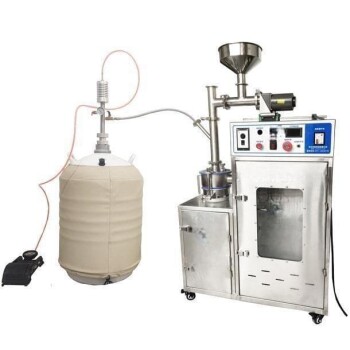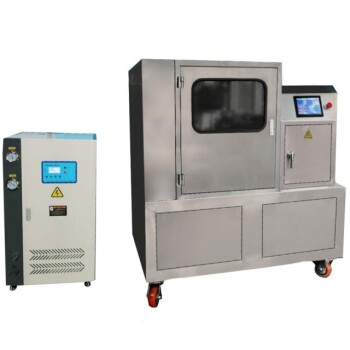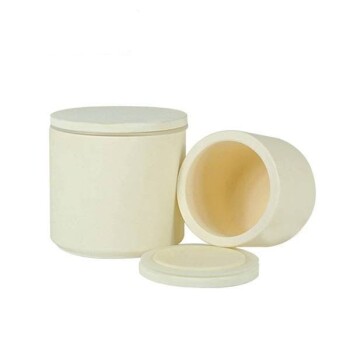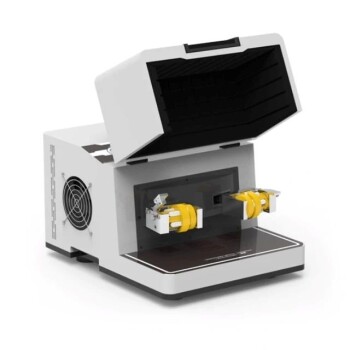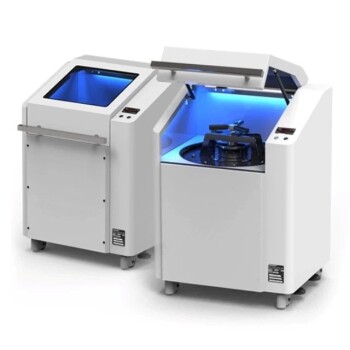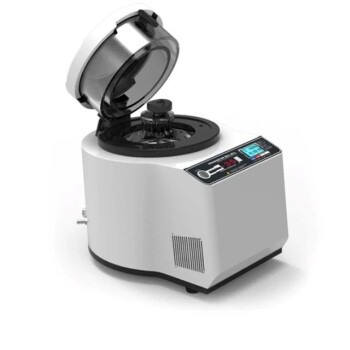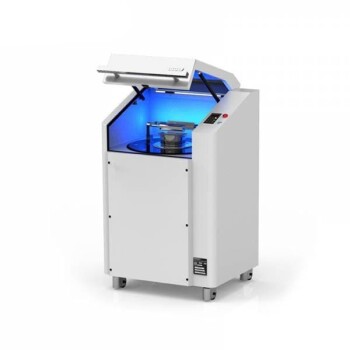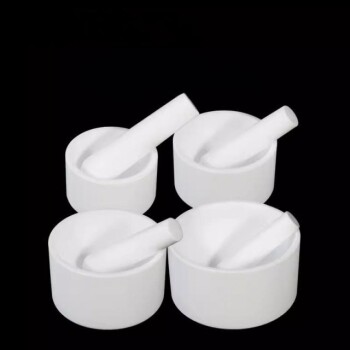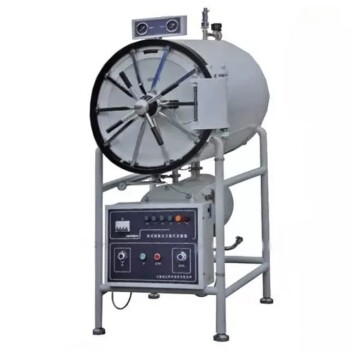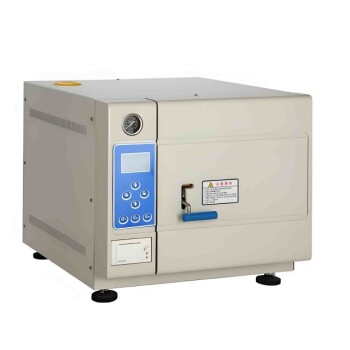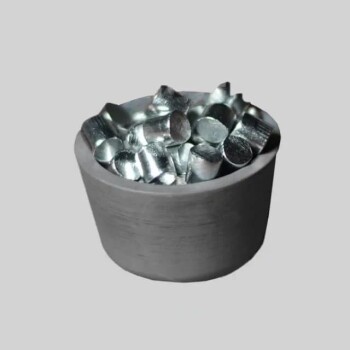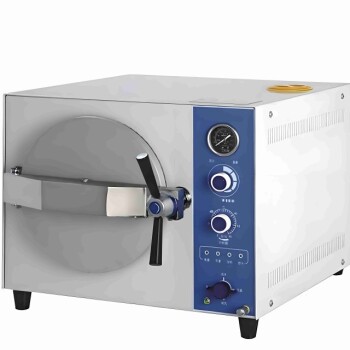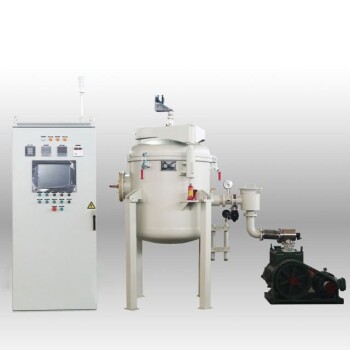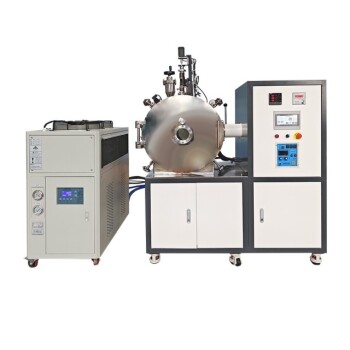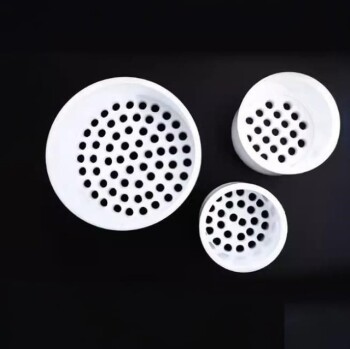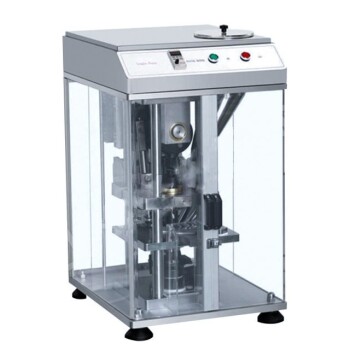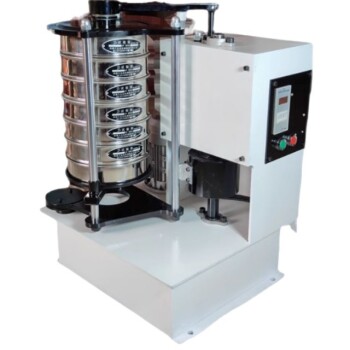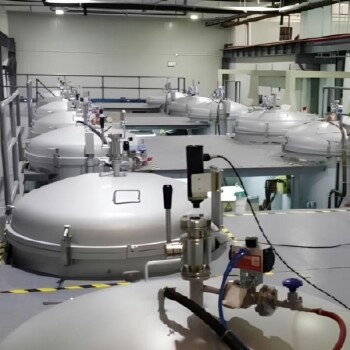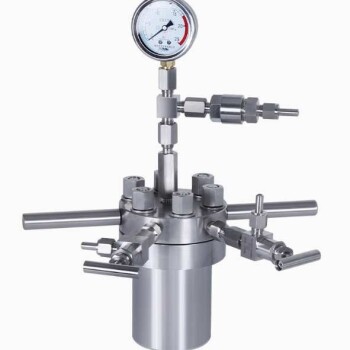في جوهره، يُستخدم الطحن المبرد للمواد التي يصعب أو يستحيل تقليل حجمها في درجة حرارة الغرفة. باستخدام مادة مبردة مثل النيتروجين السائل، تعمل العملية على تبريد المادة حتى تصبح هشة للغاية. يتيح هذا التقصف التكسير الفعال إلى جزيئات دقيقة وموحدة، مما يمنع مشاكل مثل الذوبان أو الالتصاق أو تدهور المكونات الحساسة للحرارة.
الغرض الأساسي من الطحن المبرد ليس مجرد تبريد المادة، بل تغيير خصائصها الفيزيائية مؤقتًا من مرنة وقوية إلى صلبة وهشة. يتغلب هذا التحول على الإخفاقات الشائعة للطحن التقليدي، مثل التلف الحراري، وتراكم المواد على الأدوات، وعدم اتساق حجم الجسيمات.
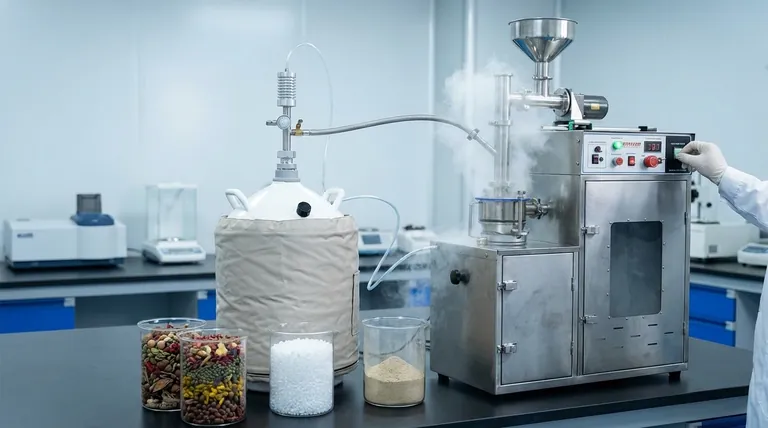
المشكلة الأساسية في الطحن التقليدي
تعتمد طرق الطحن القياسية على القوة الميكانيكية - الصدمة أو القص أو الضغط - لتفتيت المواد. في حين أن هذا فعال للعديد من المواد، فإن هذه العملية تولد احتكاكًا وحرارة كبيرة.
توليد الحرارة وعواقبه
يتم تحويل الطاقة المكثفة للطحن في الغالب إلى حرارة. بالنسبة للمواد الحساسة للحرارة مثل التوابل أو المستحضرات الصيدلانية أو بعض البوليمرات، يمكن أن يؤدي ذلك إلى تدهور أو تدمير الصفات التي ترغب في الحفاظ عليها، مثل النكهة أو الرائحة أو الفعالية الكيميائية.
تحدي المواد اللينة أو اللزجة
العديد من المواد، وخاصة البلاستيك والمطاط الصناعي والشموع، لا تُطحن جيدًا في درجات الحرارة المحيطة. بدلاً من التكسر، تصبح لينة أو لزجة أو مرنة تحت ضغط المطحنة. يؤدي هذا إلى تكتل وتراكم المواد على المعدات، وانخفاض الإنتاجية، وسوء جودة الجسيمات.
كيف يحل الطحن المبرد المشكلة
يعالج الطحن المبرد مباشرةً قيود الحرارة والليونة عن طريق إدخال البرودة الشديدة في العملية، مما يغير بشكل أساسي كيفية تصرف المادة.
مبدأ التقصف (Embrittlement)
يؤدي تبريد المادة إلى ما دون درجة حرارة التحول الزجاجي إلى فقدان خصائصها المرنة وتصبح هشة وزجاجية المظهر. عند تطبيق قوة الطحن، تتكسر المادة المتقصفة بشكل نظيف وفوري. هذا هو المفتاح لتحقيق جسيمات فائقة الدقة وموحدة للغاية.
الحفاظ على سلامة المنتج
نظرًا لأن النظام بأكمله مغمور بمادة مبردة خاملة مثل النيتروجين السائل، يتم امتصاص الحرارة على الفور. هذا يقضي على التدهور الحراري، ويحمي جودة المكونات الحساسة للحرارة. كما أنه يمنع الأكسدة عن طريق إزاحة الأكسجين، مما يزيد من الحفاظ على سلامة المنتج النهائي.
تحسين كفاءة المطحنة
من خلال منع المواد من أن تصبح لزجة، يقضي الطحن المبرد على تكتل المنتج داخل المطحنة. ينتج عن هذا معدلات إنتاج أعلى بشكل ملحوظ، واستهلاك طاقة أقل لكل وحدة منتج، وتقليل التآكل على مكونات الطحن. العملية أسرع وتتطلب وقت توقف أقل للتنظيف.
فهم المفاضلات والاعتبارات
على الرغم من قوته، فإن الطحن المبرد هو عملية متخصصة ذات متطلبات محددة. إنه ليس حلاً شاملاً لجميع مهام الطحن.
تكلفة المواد المبردة
التكلفة التشغيلية الأساسية هي الاستهلاك المستمر للنيتروجين السائل أو مادة مبردة أخرى. يجب تبرير هذه النفقات بالقيمة المضافة، مثل تحسين جودة المنتج أو القدرة على معالجة مادة كانت مستحيلة المعالجة بطريقة أخرى.
تعقيد المعدات والسلامة
تتطلب الأنظمة المبردة آلات معزولة، ومعدات مناولة متخصصة، وبروتوكولات أمان صارمة لإدارة المواد شديدة البرودة. الاستثمار الرأسمالي الأولي والتعقيد التشغيلي أعلى من إعدادات الطحن التقليدية.
متى يكون مبالغًا فيه
بالنسبة للمواد الصلبة الهشة التي تُطحن بسهولة في درجة حرارة الغرفة (مثل المعادن أو الأملاح أو السيراميك)، لا يقدم الطحن المبرد أي ميزة كبيرة وسيضيف فقط تكلفة وتعقيدًا غير ضروريين.
اتخاذ الخيار الصحيح لتطبيقك
يعتمد اختيار طريقة الطحن المناسبة بالكامل على خصائص المواد الخاصة بك وأهداف المنتج النهائي.
- إذا كان تركيزك الأساسي هو الحفاظ على الخصائص الحساسة للحرارة: الطحن المبرد ضروري لحماية المركبات المتطايرة في التوابل والأطعمة والمكونات الصيدلانية النشطة (APIs).
- إذا كان تركيزك الأساسي هو معالجة المواد اللينة أو المرنة: الطحن المبرد هو الطريقة المتفوقة للبوليمرات والمطاط والشموع والمواد اللاصقة التي قد تذوب أو تتسبب في تراكم المواد على المعدات بطريقة أخرى.
- إذا كان تركيزك الأساسي هو تحقيق مساحيق فائقة الدقة وموحدة: تسمح عملية التقصف بمستوى من التحكم في حجم الجسيمات والاتساق يصعب تحقيقه غالبًا بالطرق التقليدية.
- إذا كان تركيزك الأساسي هو تقليل الحجم بكميات كبيرة وفعالة من حيث التكلفة للمواد البسيطة: يظل الطحن التقليدي هو الخيار الأكثر اقتصادا ومباشرة للمواد غير الحساسة للحرارة أو المرنة.
من خلال تغيير الحالة الفيزيائية للمادة بشكل أساسي لغرض تقليل الحجم، يفتح الطحن المبرد إمكانيات معالجة غير متاحة بطرق أخرى.
جدول ملخص:
| الميزة الرئيسية | الوصف |
|---|---|
| يمنع التلف الحراري | يحمي المركبات المتطايرة في التوابل والمستحضرات الصيدلانية والبوليمرات. |
| يعالج المواد المرنة | يطحن بكفاءة المواد اللينة واللزجة مثل البلاستيك والمطاط. |
| يحقق جسيمات دقيقة | ينتج مساحيق فائقة الدقة وموحدة من خلال تقصف المادة. |
| يحسن كفاءة المطحنة | يقلل من تراكم المواد على المعدات، ويزيد الإنتاجية، ويقلل من استهلاك الطاقة. |
هل أنت مستعد لحل أصعب تحديات الطحن لديك؟ إذا كنت تتعامل مع توابل حساسة للحرارة، أو مستحضرات صيدلانية، أو بوليمرات، أو مواد أخرى يصعب طحنها، فإن حلول الطحن المبرد من KINTEK يمكنها الحفاظ على جودة منتجك وتعزيز كفاءة عمليتك. تضمن خبرتنا في المعدات المخبرية حصولك على النظام المناسب لاحتياجاتك. اتصل بخبرائنا اليوم لمناقشة كيف يمكننا دعم تطبيقات الطحن في مختبرك!
دليل مرئي
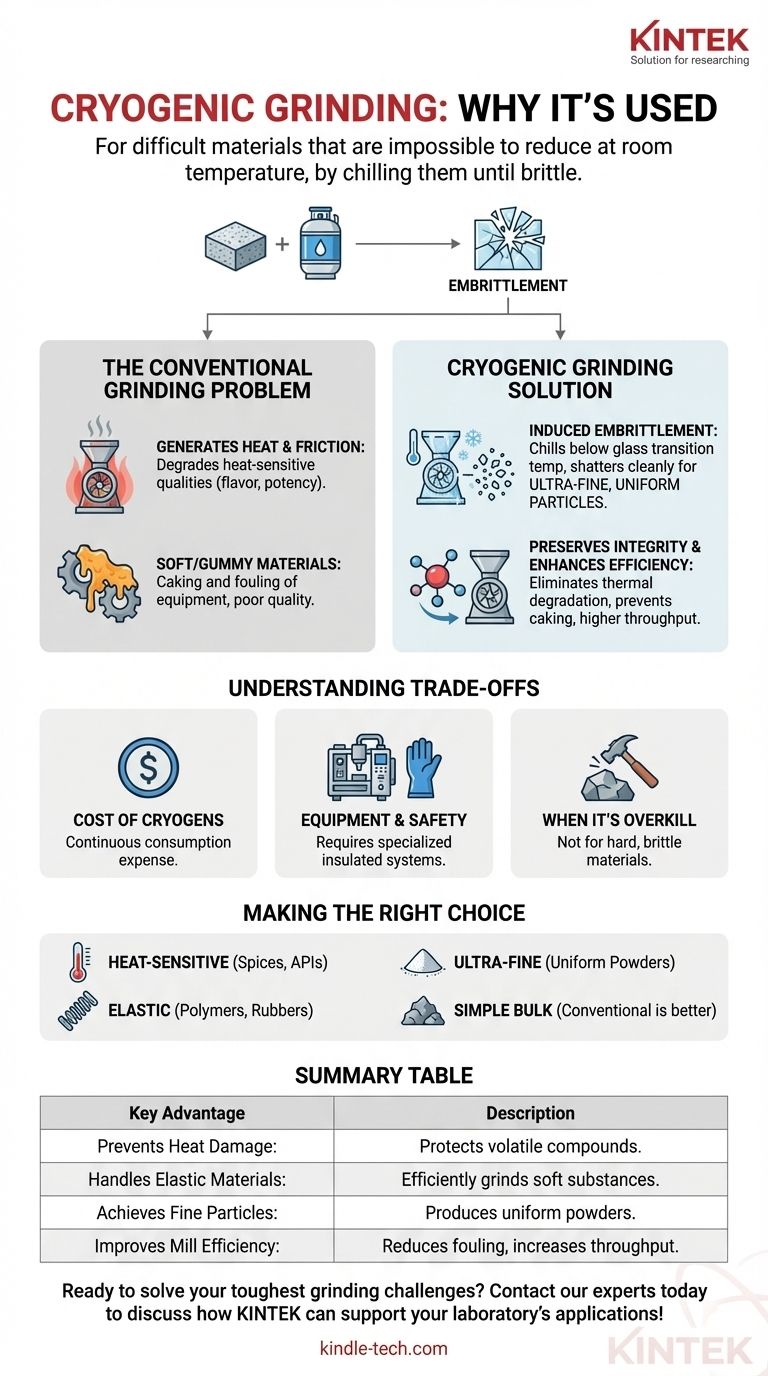
المنتجات ذات الصلة
- مطحنة طحن مبرد بالنيتروجين السائل مع مغذي لولبي
- استخدام طحن التبريد بالنيتروجين السائل لسحق المواد الخام البلاستيكية والمواد الحساسة للحرارة
- مطحنة فائقة الدقة بالاهتزاز مبردة بالماء ومنخفضة الحرارة بشاشة تعمل باللمس
- مطحنة كروية مخبرية بوعاء وكرات طحن من الألومينا والزركونيا
- مطحنة طحن الأنسجة الهجينة المختبرية
يسأل الناس أيضًا
- ما هي الطحن البارد؟ تحقيق جسيمات فائقة النعومة دون تلف حراري
- ما الذي يجعل مجمدات درجات الحرارة المنخفضة جداً (ULT) موفرة للطاقة؟ استراتيجيات التصميم والتشغيل الرئيسية
- ما هي الأداة التي يمكن استخدامها لسحق شيء ما؟ طابق الأداة مع صلابة وهشاشة مادتك
- ما هي المادة المسحوقة؟ أطلق العنان لإمكانات المواد من خلال الطحن الدقيق
- ما هي عملية الطحن في المختبر؟ المفتاح لإعداد العينات بدقة
